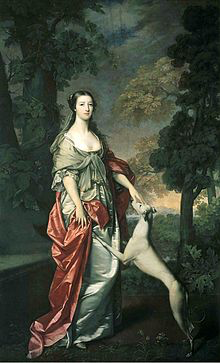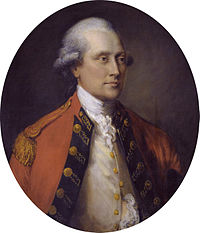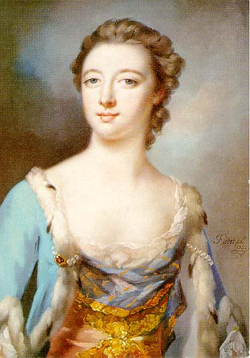Regency Personalities Series
In my attempts to provide us with the details of the Regency, today I continue with one of the many period notables.
Elizabeth Gunning 1st Baroness of Hamilton of Hameldon Duchess of Argyll
December 1733 – 20 December 1790

Elizabeth Gunning
Elizabeth Gunning 1st Baroness of Hamilton of Hameldon Duchess of Argyll was born in Hemingford Grey, Huntingdonshire, she was the daughter of John Gunning of Castle Coote, County Roscommon and his wife, the Hon. Bridget Bourke, daughter of Theobald Bourke (1681–1741), 6th Viscount Mayo. Elizabeth’s elder sister was Maria Gunning.
In late 1740 or early 1741, the Gunning family returned to John Gunning’s ancestral home in Ireland, where they divided their time between their home in Roscommon, and a rented house in Dublin. According to some sources, when Maria and her sister Elizabeth came of age, their mother urged them to take up acting in order to earn a living, due to the family’s relative poverty. The sources further state that the Gunning sisters worked for some time in the Dublin theatres, befriending actors like Margaret Woffington, even though acting was not considered a respectable profession as many actresses of that time doubled as courtesans to wealthy benefactors. However, other sources differ and point out that Margaret Woffington did not arrive in Dublin until May 1751, by which time Maria and her sister Elizabeth were in England.
In October 1748, a ball was held at Dublin Castle by the Viscountess Petersham. The two sisters did not have any dresses for the gathering until Tom Sheridan, the manager of one of the local theatres, supplied them with two costumes from the green room, those of Lady Macbeth and Juliet. Wearing the costumes, they were presented to the Earl of Harrington, the then Lord Lieutenant of Ireland. Harrington must have been pleased by the meeting as, by 1750, Bridget Gunning had persuaded him to grant her a pension, which she then used to transport herself, Maria, and Elizabeth, back to their original home in Huntingdon, England. With their attendance at local balls and parties, the beauty of two girls was much remarked upon. They became well-known celebrities, their fame reaching all the way to London, with themselves following soon afterwards. On 2 December 1750, they were presented at the court of St James. By this time, they were sufficiently famous that the presentation was noted in the London newspapers.
Elizabeth was immortalized in portraits by, among others, artists Sir Joshua Reynolds and Gavin Hamilton .
In January 1752, Elizabeth met the Duke of Hamilton. According to Walpole, on 14 February (St. Valentine’s Day) at a party at Bedford House, the duke declared his desire to marry Elizabeth that night and he called for a local parson to perform the ceremony. However, without a license, calling of banns, and a ring, the parson refused. They were eventually married that night in Mayfair Chapel (which did not require a license) in a clandestine marriage, with a ring from a bed-curtain, whereupon Elizabeth became the Duchess of Hamilton.
When the duke died in 1758, she became engaged to the 3rd Duke of Bridgewater, but the engagement was cancelled that year for reasons unknown. On 3 February the following year she married John Campbell, Marquess of Lorne.
From 1761 to 1784, she was a Lady of the Bedchamber to Queen Charlotte. Her husband later succeeded to his father’s title of Duke of Argyll in 1770, and Elizabeth became known as the Duchess of Argyll. On 20 May 1776, King George III, a long time admirer of hers, created her Baroness Hamilton of Hameldon in her own right.
She had three children from her first marriage with the Duke of Hamilton:
- Lady Elizabeth Hamilton (26 January 1753 – 14 March 1797), married Edward Smith-Stanley, 12th Earl of Derby
- James Douglas-Hamilton, 7th Duke of Hamilton (18 February 1755 – 7 July 1769)
- Douglas Douglas-Hamilton, 8th Duke of Hamilton (24 July 1756 – 2 August 1799)
She had five children from her second marriage with the Duke of Argyll:
- Lady Augusta Campbell
- George John Campbell, Earl of Campbell (1763–1764)
- George Campbell, 6th Duke of Argyll (1768–1839)
- Lady Charlotte Campbell(1775–1861)
- John Campbell, 7th Duke of Argyll (1777–1847)

































